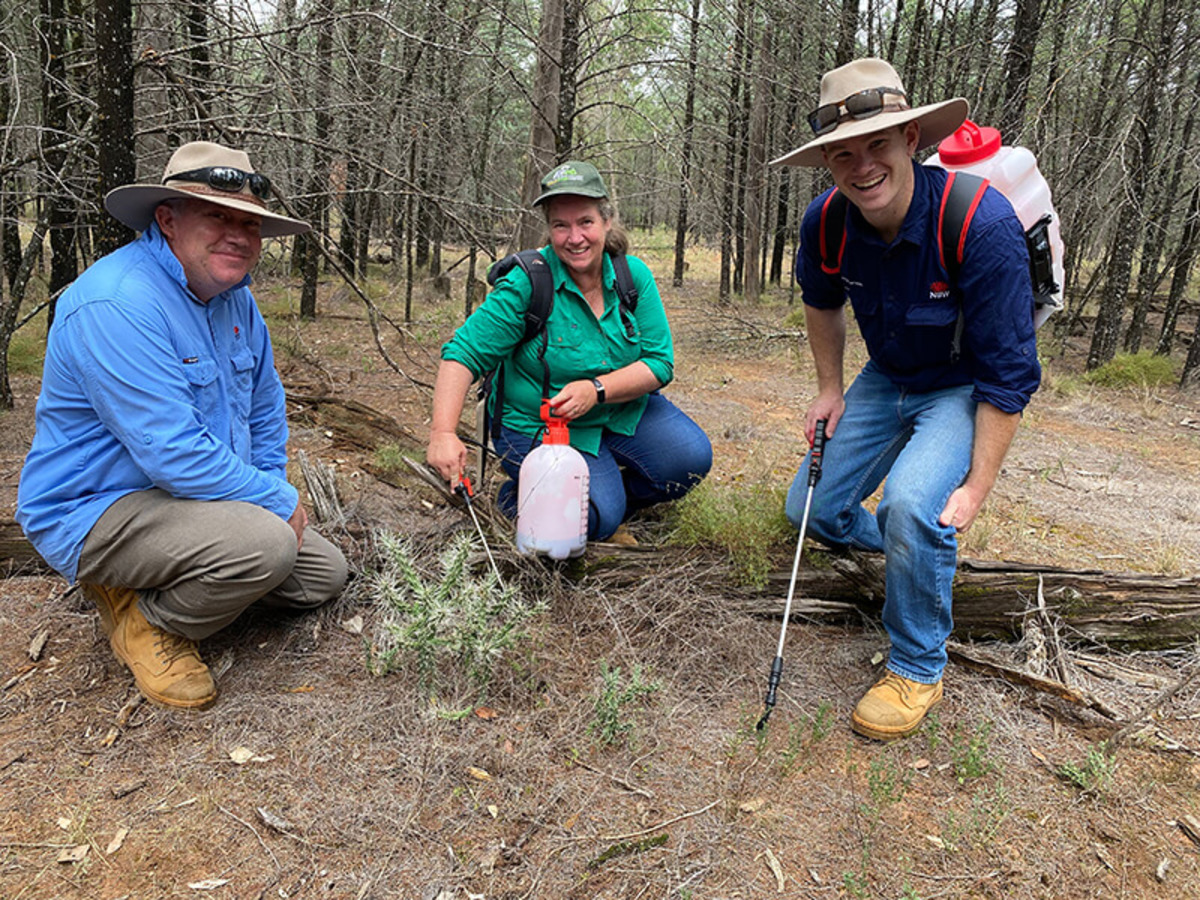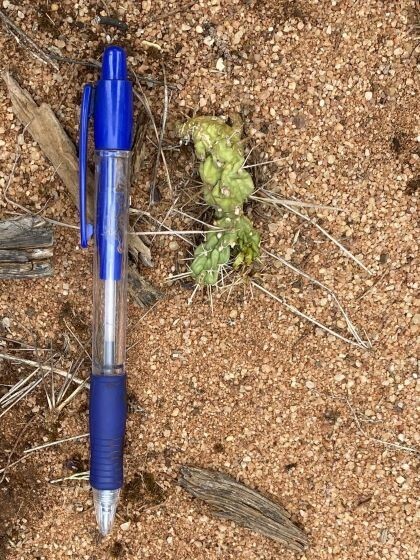Latest assault on Hudson Pear infestation at Quanda Reserve
Ailish Dwyer
21 April 2025, 2:40 AM
 Members of the Central West Hudson Pear Task Force. Image: NSW Crown Lands
Members of the Central West Hudson Pear Task Force. Image: NSW Crown Lands Members of the Central West Hudson Pear Task Force have teamed up for the third consecutive year in an effort to control the spread of the weed at Quanda Reserve near Coonamble.
Hudson pear plant is an invasive cactus species originating from Mexico.
It is a declared regional priority weed to eradicate due to its aggressive spread and harmful impact on livestock.
This latest operation involved 17 people walking through the 28-hectare site and targeting Hudson Pear plants with herbicide.
Reserve managers from Castlereagh Macquarie County Council (CMCC) led the effort.
They were joined by staff from Crown Lands, Central West Local Land Services, North West Local Land Services, Department of Primary Industry and Regional Development Agriculture and Biosecurity, and Bogan, Forbes, Parkes and Weddin Shire Councils.
With Hudson Pear already spreading in the Lightning Ridge area, landholders and land authorities are on high alert for further outbreaks.
In 2023, a number of plants were detected on the edge of the Pilliga Forest in the Walgett Shire.
Seventeen small juvenile Hudson pears were found after a group of 19 people, including landowners, CMCC staff, and North West and Central West Local Land Services, did a walk-through of the area.
Andrea Fletcher-Dawson, Senior Bio Security Weeds Officer at CMCC said the cacti was not entirely eradicated, but site is now under ongoing surveillance and management.
"We go back to that every 3 months. It's in the forest there and on the roadside. Once you've got Hudson pear you've got to go back every few months to check on it.
"The root system goes further down than people realize. The slightest root can lead to an infestation."

Even a small segment of Hudson Pear can grow into a full cactus. Image: NSW Local Land Services
The population is controlled through a mixture of chemical and biological means.
Cochineal insects which feed on the Hudson Pear plant are bred in the Don Mckenzie Weed Control Mass Rearing Facility.
The release of these insects helps to contain infestations of the plant in areas where chemical control is ineffective.
Education is also essential and CMCC often hosts workshops to raise awareness around the issue.
Initiatives like "come clean, go clean" encourage people to be proactive and check their clothing, shoes and car tyres for possible unwanted pests or weeds to maintain biosecurity.
Landowners are advised to remain vigilant.

Hudson pear plants should be treated immediately with herbicide and reported to the local council's biosecurity officer.
Physical removal is possible however the site must be monitored due to chance of regrowth.
Burning the plant is not advised because fire cannot reach the root system, meaning it can still grow back even after being set alight.
"If you think you've got it, just give us a call or send us a photo so we can get ahead of it," said Ms Fletcher-Dawson.
"The more that we get the message out, the sooner they come forward, the more chance we have of getting it under control."



